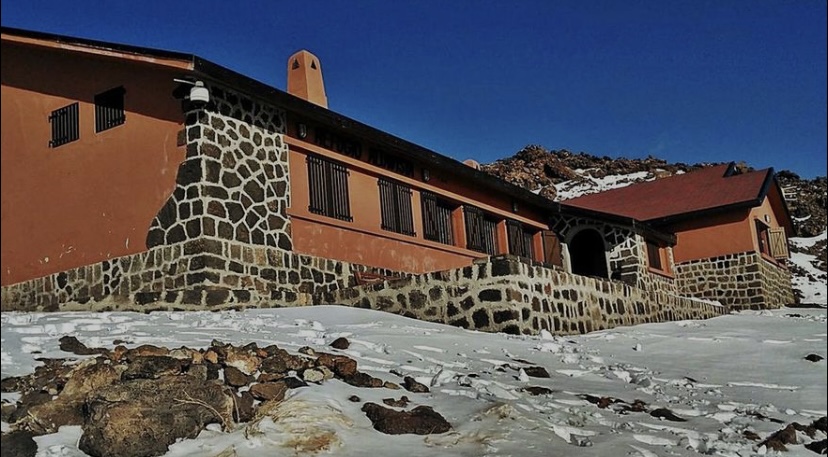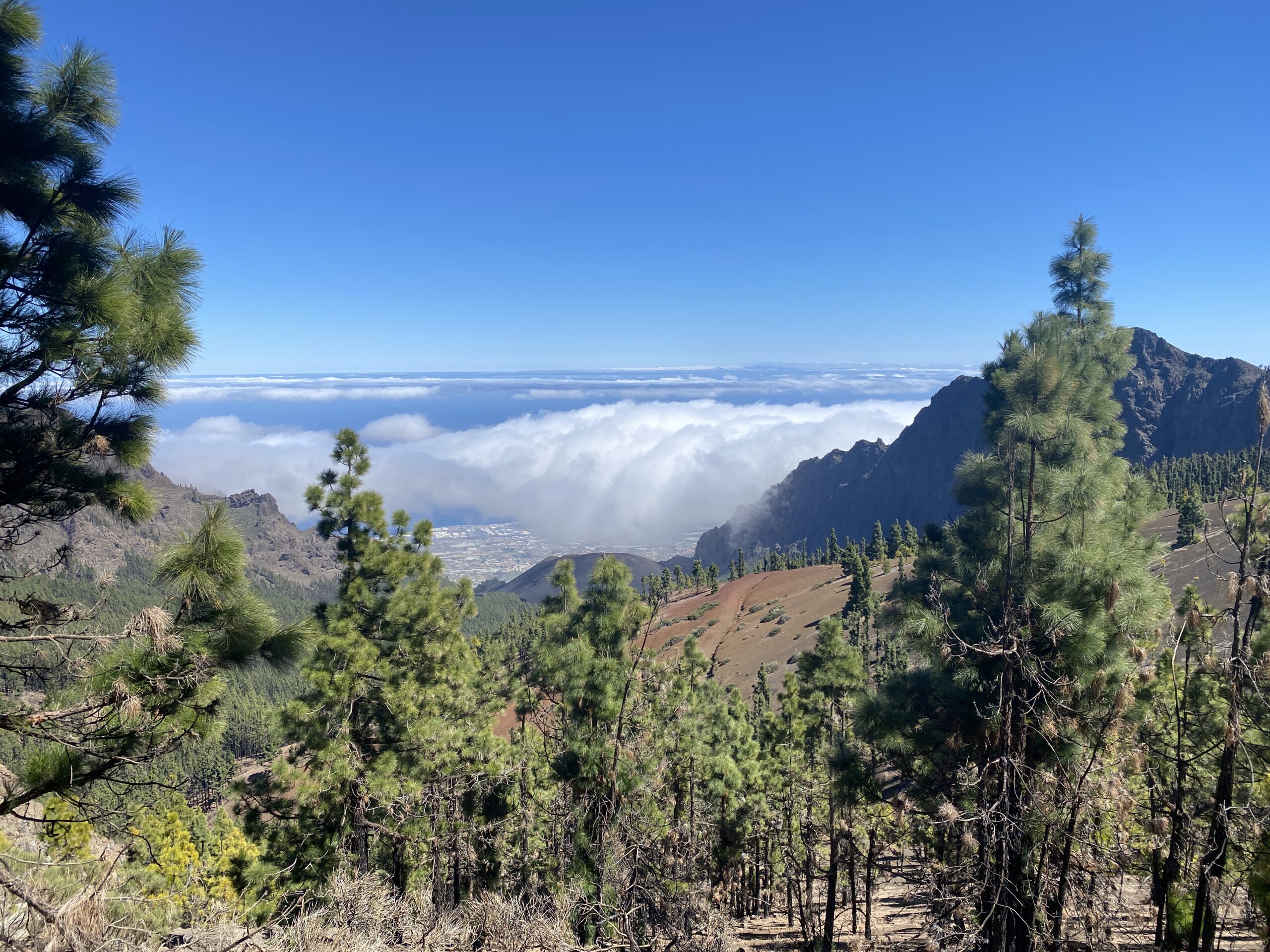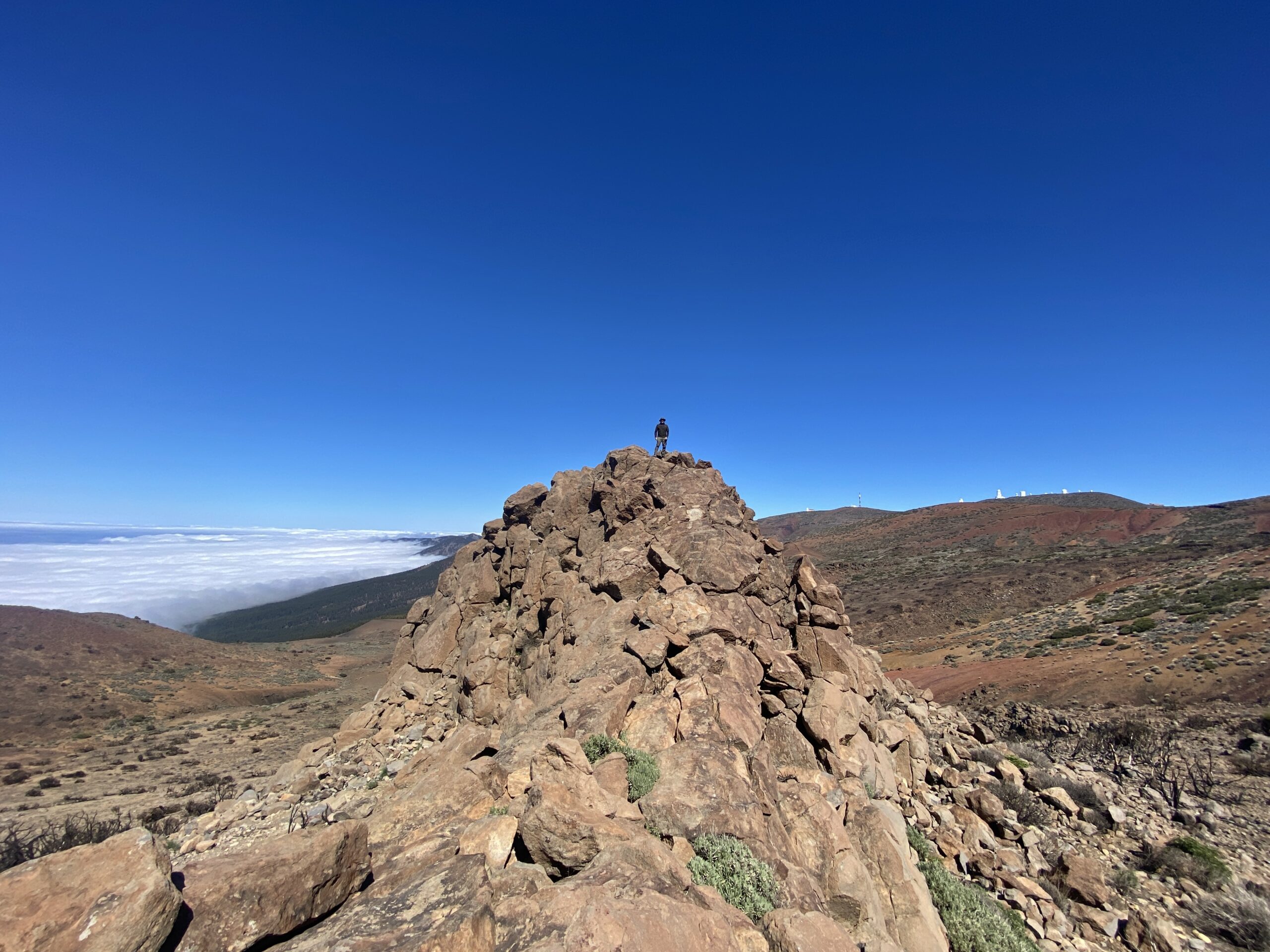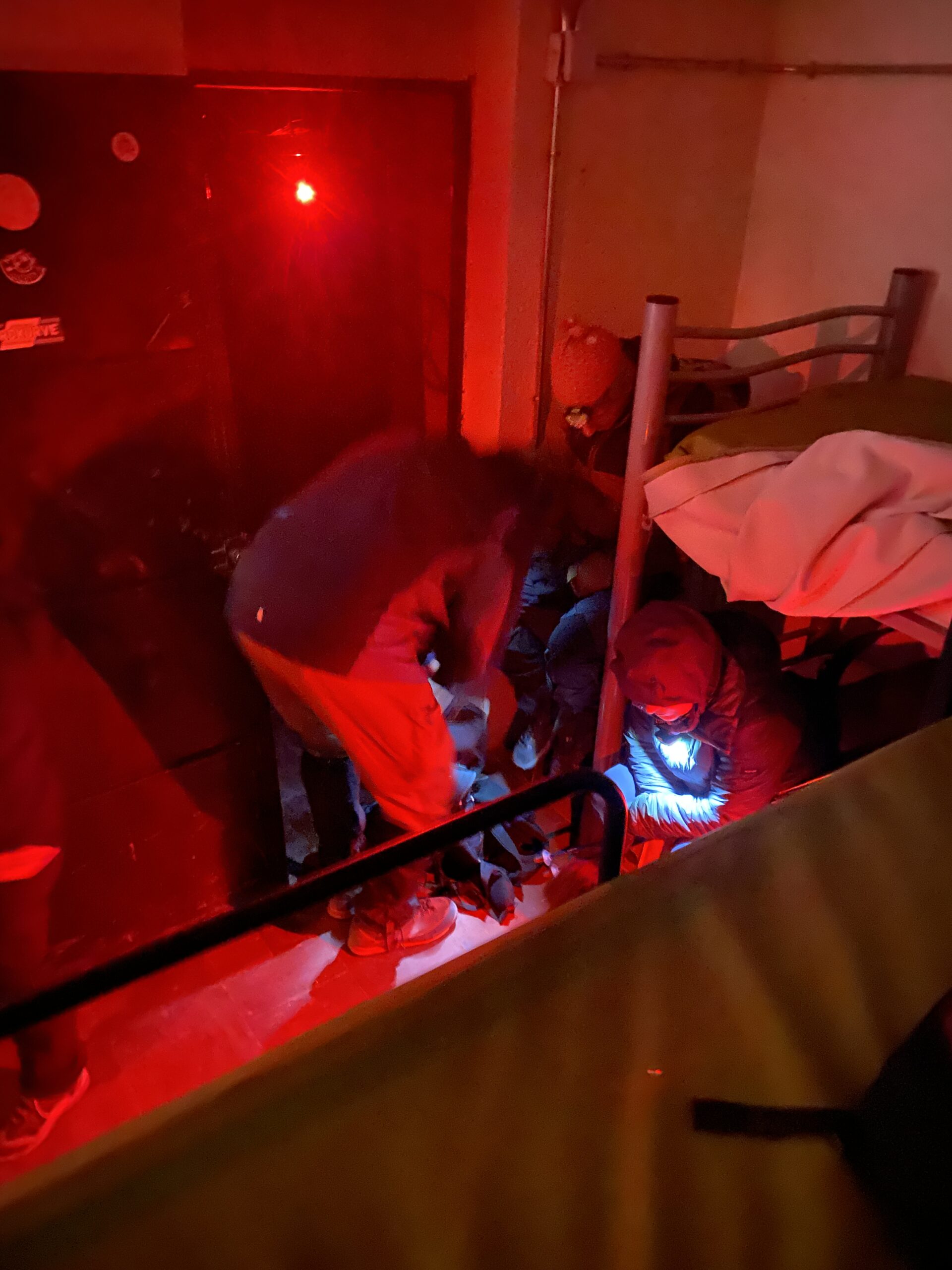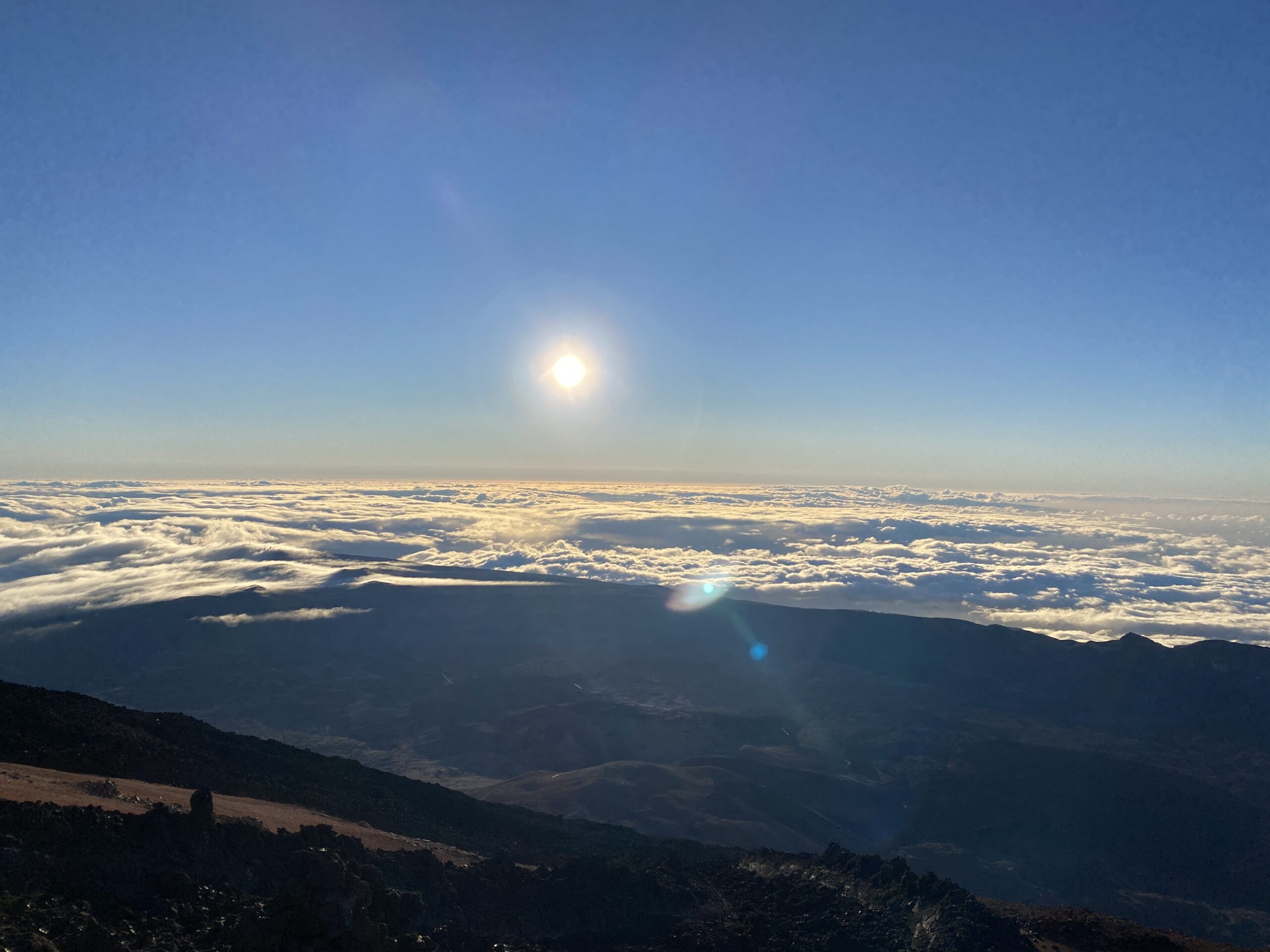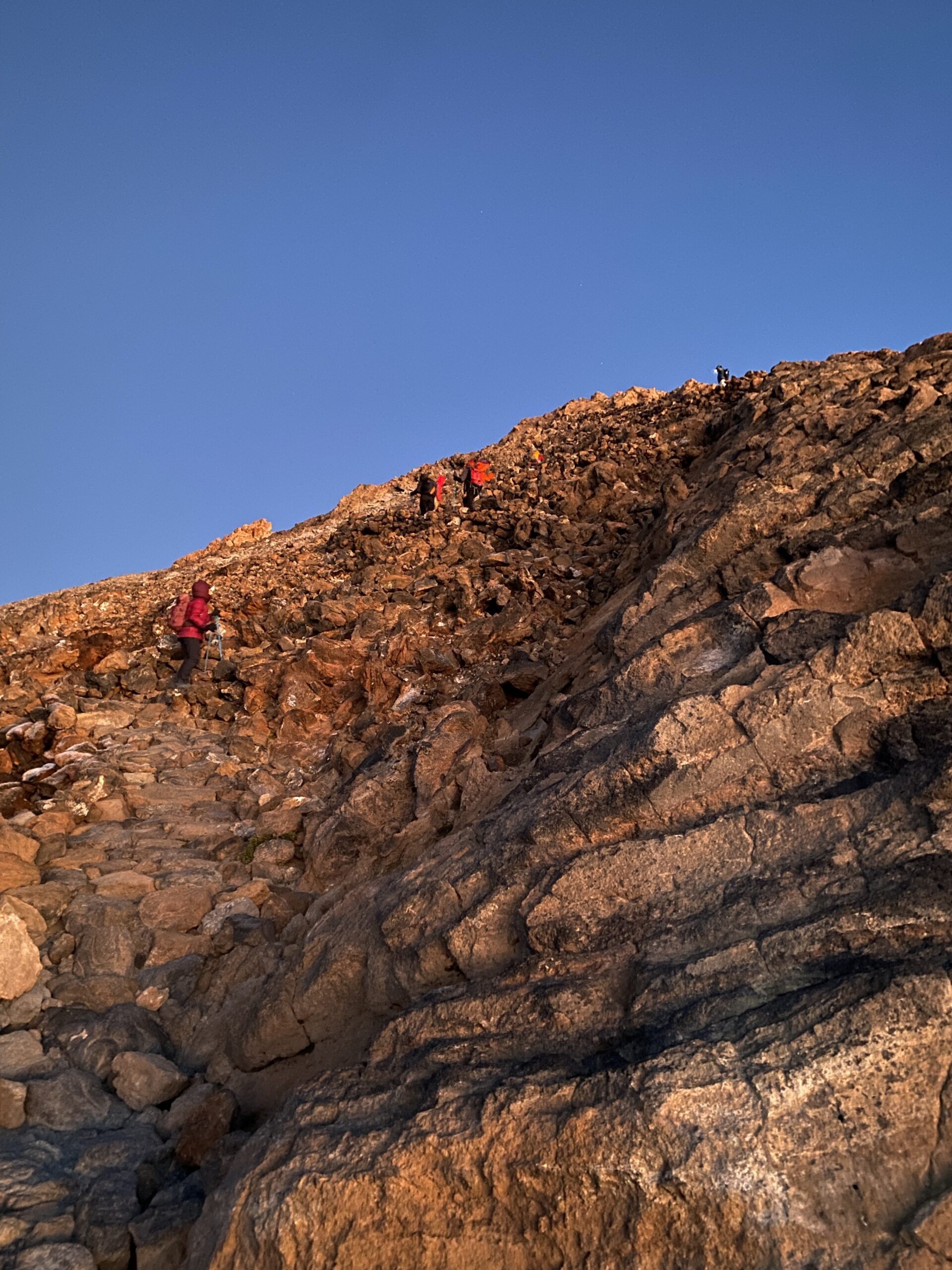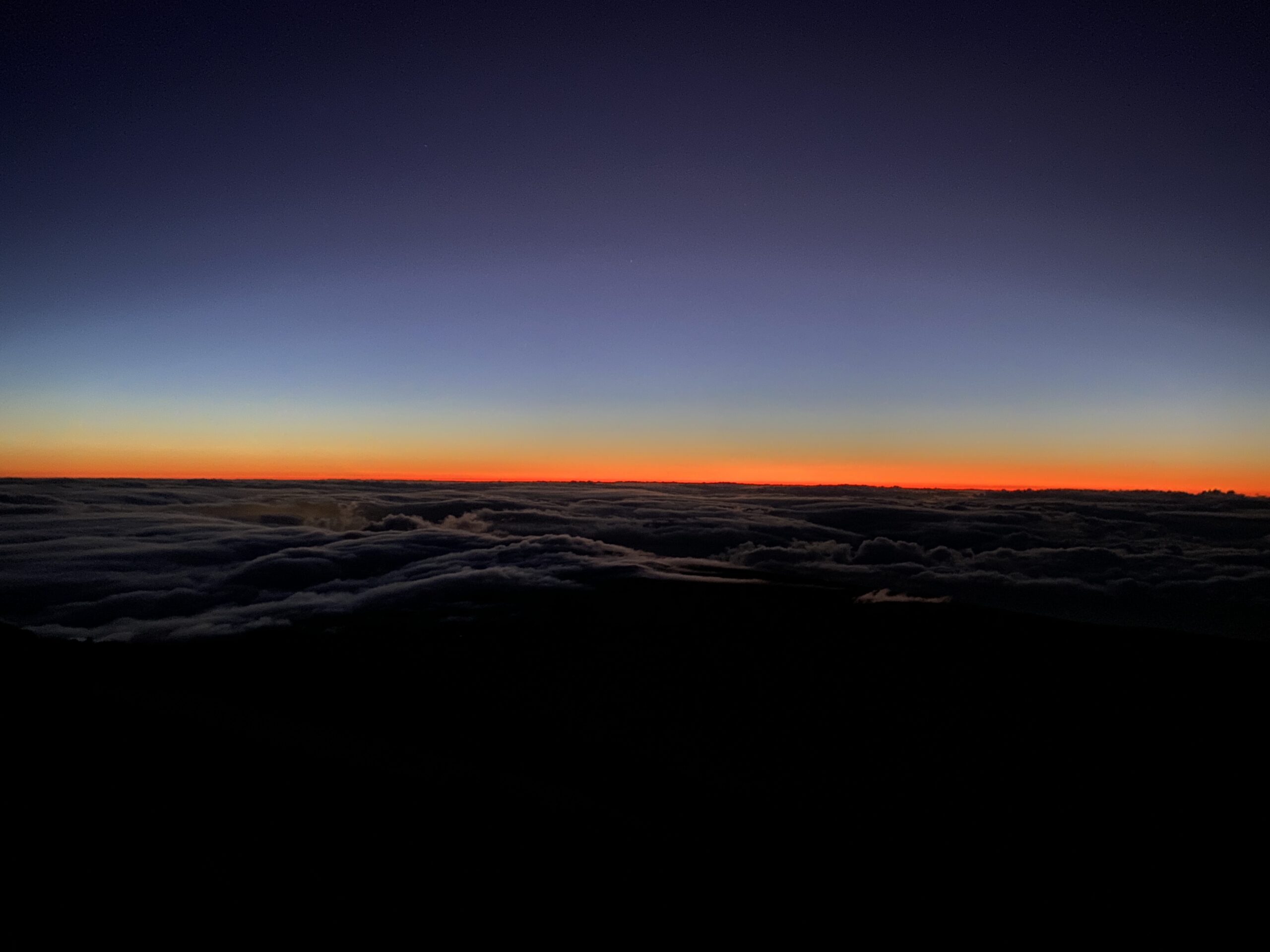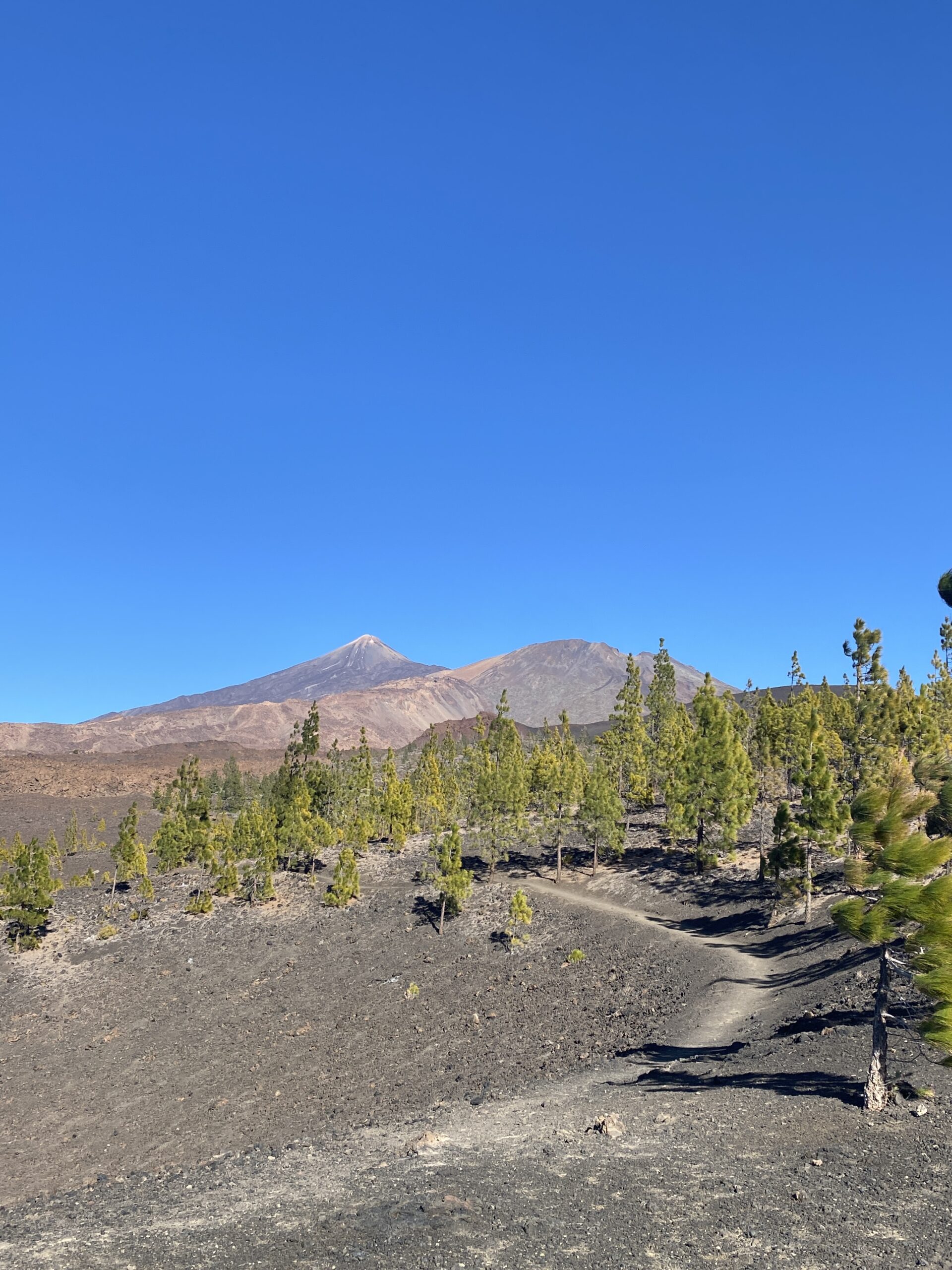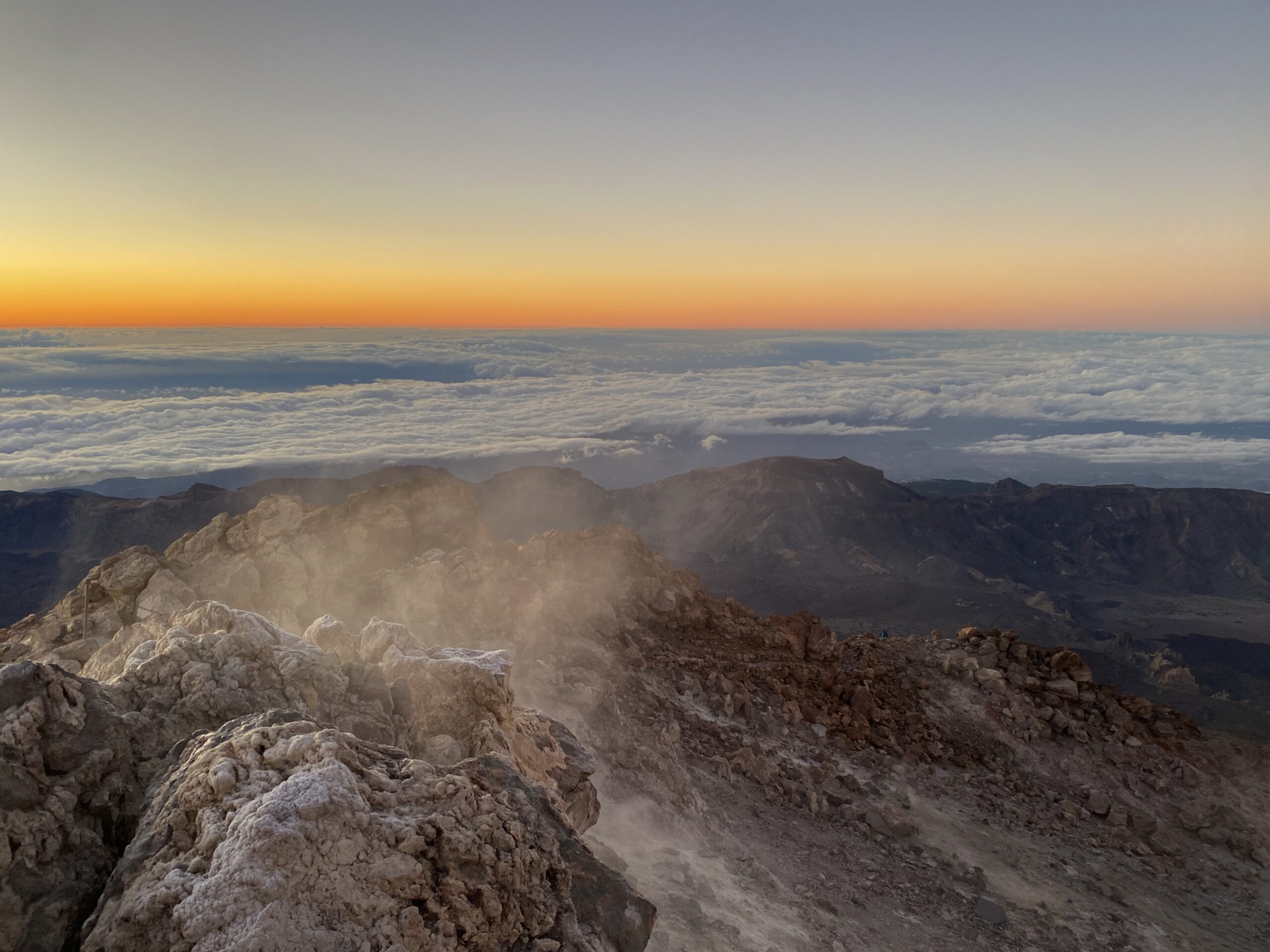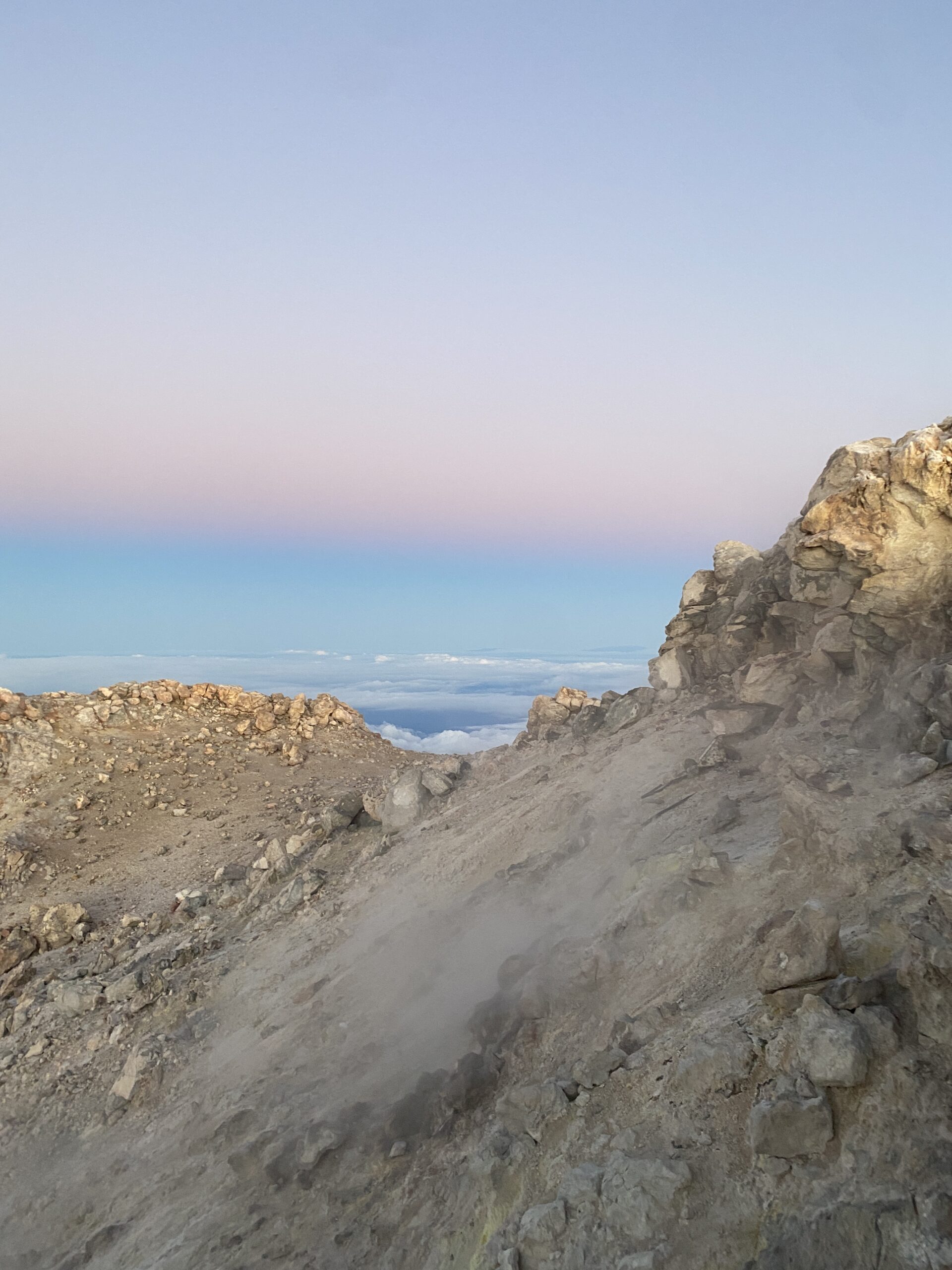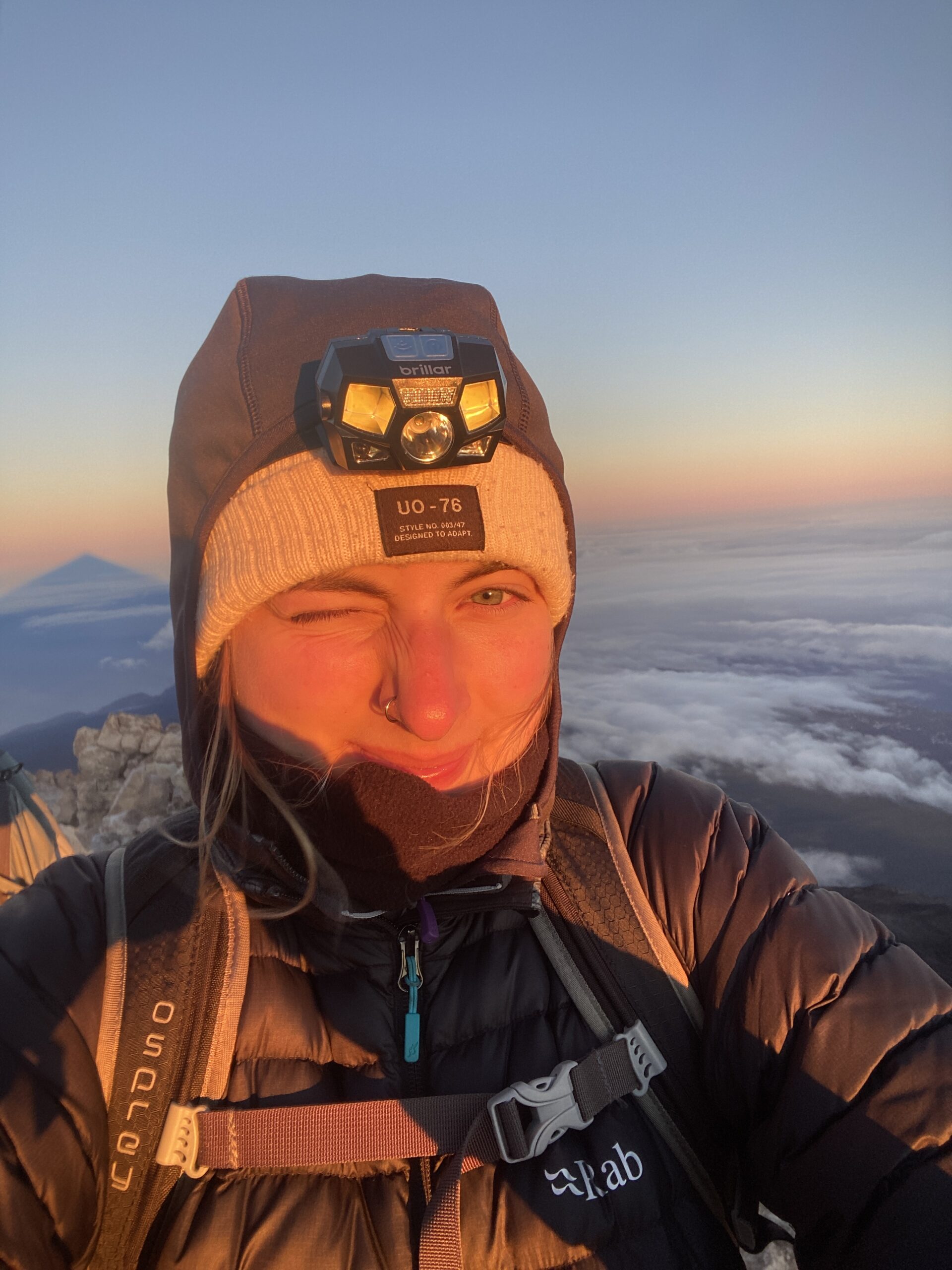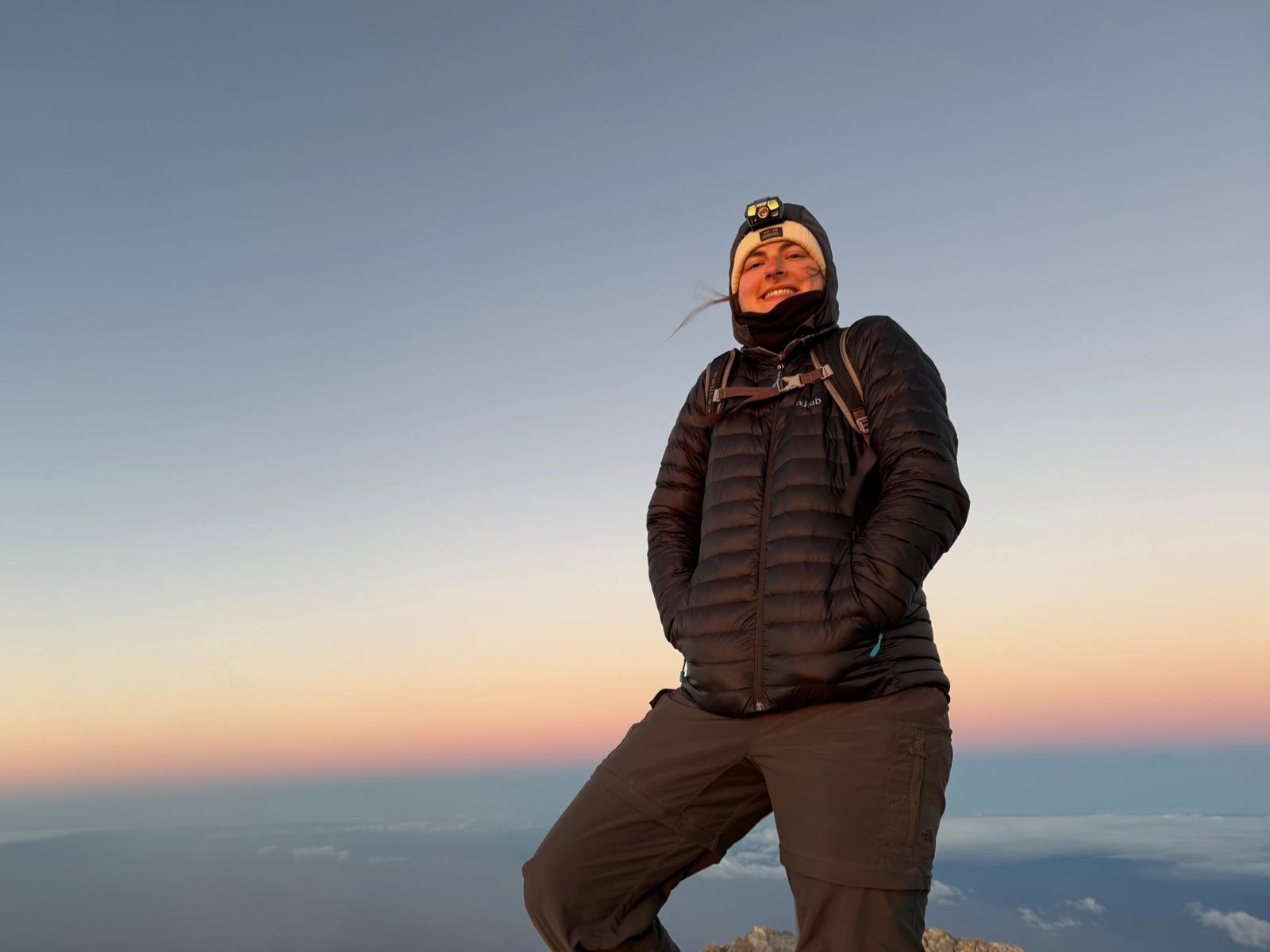I hiked the highest Spanish mountain with my dad… in the dark.
Location: Mt Teide, Tenerife
Elevation: 3,715m / 12,188ft
Time taken: 7 hours (one way, not starting sea level)
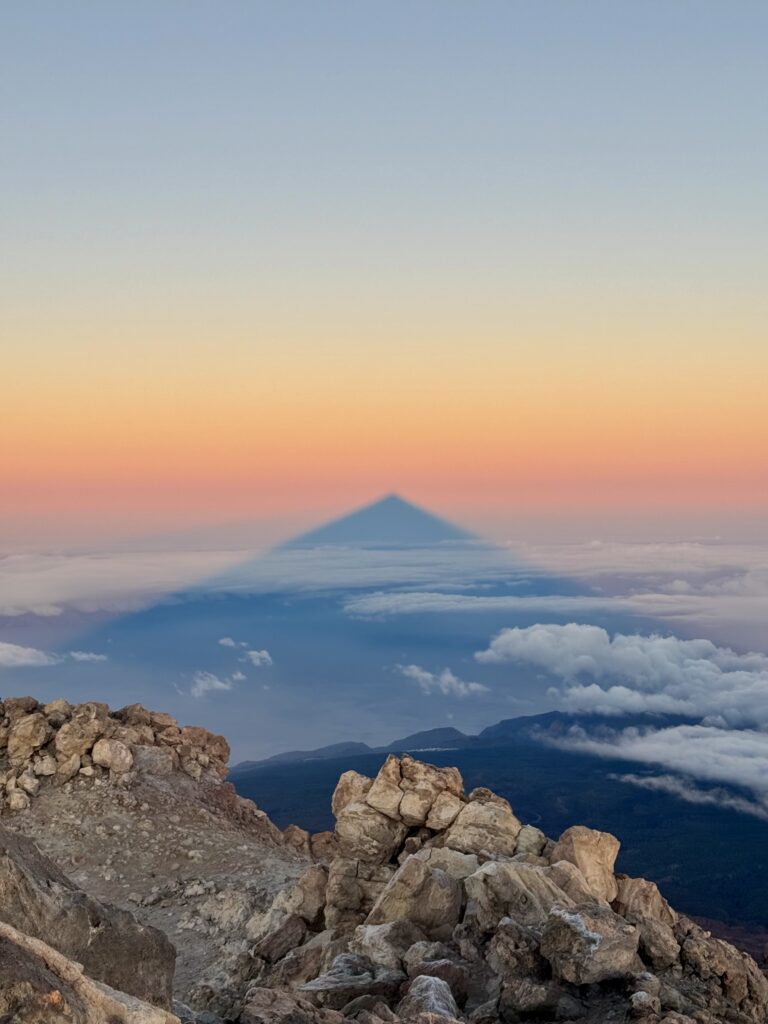
There are certain events in your lifetime that you benefit from prepping for; an important exam, running a marathon or perhaps a dream job interview. Hiking a close to 4000m volcano may also fall into this category. I had planned to climb Mt. Teide, located in the Canary Islands, in March 2025, with my dad… here’s how it started.
One of the biggest challenges of committing to climb Teide is securing a permit, these are required to reach the summit to prevent overcrowding and to protect the national park. These permits are notoriously difficult to obtain, often selling out months in advance. Park rangers patrol the volcano 24/7, checking these permits, and ensuring that hikers have proper equipment like sturdy boots and trekking poles, in hope to minimize accidents and reduce the need for rescues. Since the permits for our planned trek were long gone, Dad and I managed to secure the last remaining spots on a small group expedition where permits were included. This decision also committed us to a nighttime ascent.
Preparation wise, trekking in winter is a lot like the life of a camel – hear me out. Your body acts as an energy reserve, so without the blazing heat and relentless sun, carrying five litres of water isn’t necessary. Instead, preloading hydration in the days leading up to the trek is far more effective than gulping down water mid-ascent in high-altitude conditions. Like a camel’s hump, a well-prepared body ensures you have the resources ready before the journey begins. Ideally, we should have started this process well before the day prior to the trek, but, alas, that wasn’t the case. We both aimed to eat three to four balanced meals over the day before (though I only managed a small bowl of granola, a veggie burger, and some bread with hummus). And as our plan was to summit Teide overnight, to avoid hiking while inadvertently completing the second half of a 24-hour awake challenge, I had hoped for a few hours of sleep beforehand. Again, that plan didn’t quite materialize, and I clocked a grand total of zero minutes.
I’d never felt nervous about a trek before, usually, I’m like an eager puppy, ready to bolt up the trail. But something about this one unsettled me. Maybe it was the sheer elevation. At 3,715m, Teide would be the highest peak I’d ever attempted, a significant leap from my previous record: 1,748m at Ben Lomond in New Zealand. Or perhaps it was the altitude. I’d never climbed high enough to feel its effects before, yet I knew Teide would likely introduce me to that experience firsthand. Then there was the fact that I wasn’t doing this alone, I had my old man alongside me, I had to consider someone else’s endurance alongside my own. Though, he was probably thinking the exact same thing about me. We made a pact: if, for any reason, one of us couldn’t make it to the summit, the other would press on.
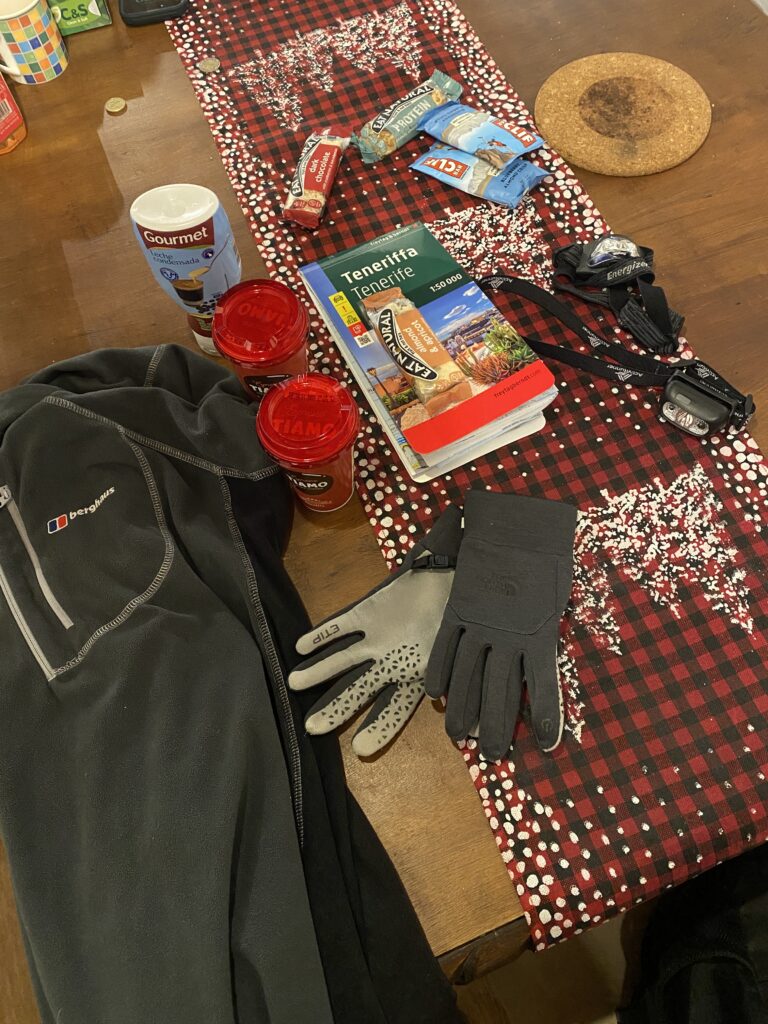
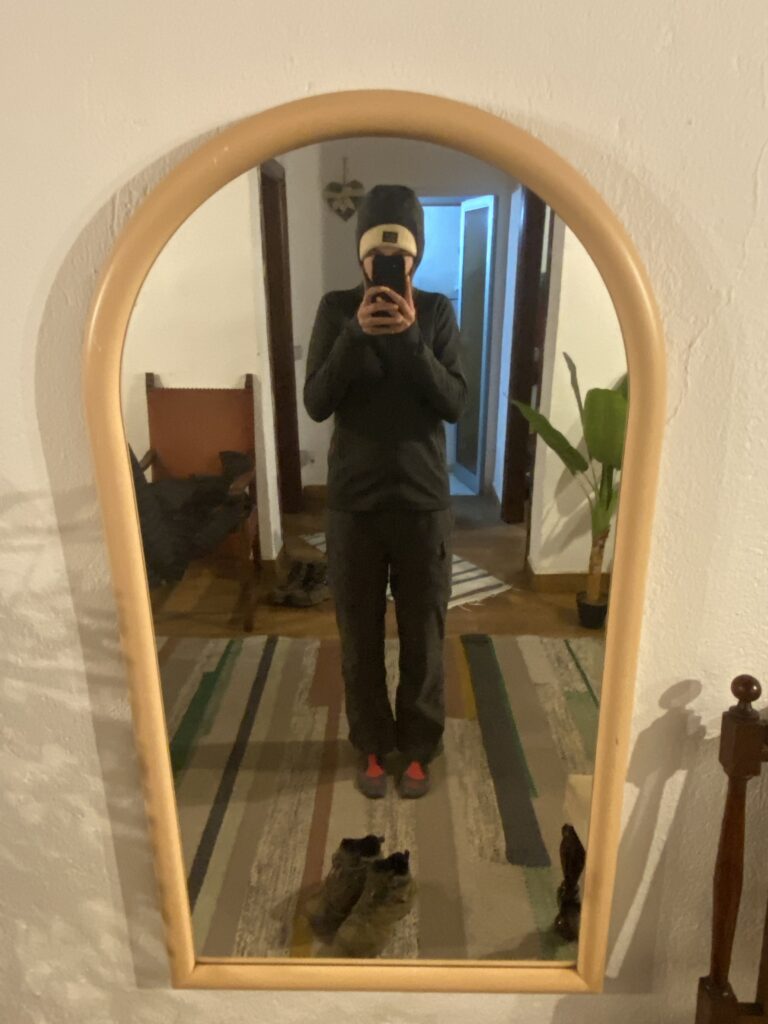
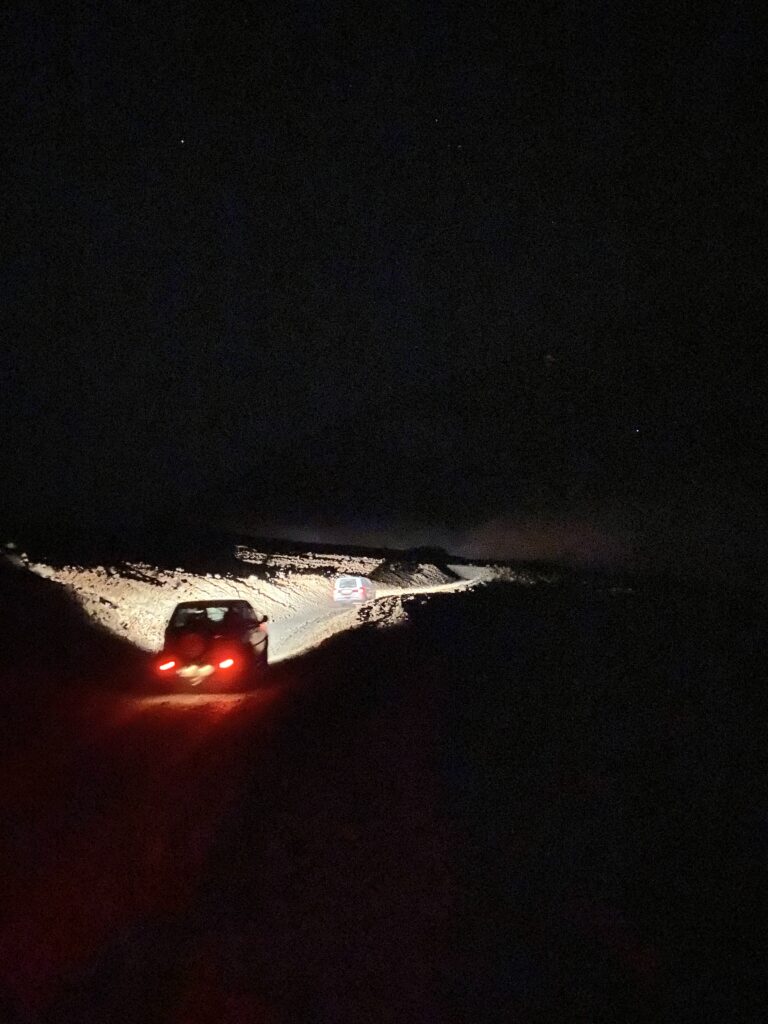
Fast forward to the big day, we left our accommodation around 10:30pm to begin the trek just before midnight, setting off we navigated the narrowest mountain passes in total darkness to find our start point. I was on the verge of sleep in the passenger seat, lulled by the hum of the car, until we stepped outside. The second the cold night air hit my face my fatigue vanished, replaced by energy and excitement. We would be following the Montana Blanco – Pico Del Teide Trail, named from the light-coloured stones on its surface created from years of volcanic activity.
Setting off we both felt extremely optimistic, the first 5k of the path lulled us into a false sense of security, it didn’t feel that challenging, the hights which laid in front of us were concealed in the darkness and the stars were a pleasant view to look up at for encouragement. With our headtorches on red, I even spotted 2 shooting stars just above the horizon. We were able to have light conversation and discuss what laid ahead. Our guide, Amos, stated that once we reached 2,800m, it was possible we’d start feeling the altitude and if this were to occur the best way to deal with it is simply breathing deep and consistent breaths through your nose, and keep a slow and steady pace. I wholeheartedly believe it was this technique that made this climb, dare I say easy, for me.
As the trail became steeper my focus was just on putting on foot in front of the other. Hiking these kinds of distances is extremely beneficial for me, not only for my fitness but also for my mental health, I slip into a meditative state where my thoughts quiet, and all that matters is the present moment and how my body is moving. Every hour and a half, we pause for a water break and a jelly baby, a small but necessary boost of energy, yet somehow, the hours blur together, slipping away unnoticed. I’m not sure my dad would say he felt the same. As the incline increased, I became even more lost in my own world. The lack of visibility added to this surreal sensation, so looking back, the whole experience feels like a dream. Time had no meaning; my only focus was reaching the summit. Even now, I can’t tell you how long we walked for – just that we kept moving forward.
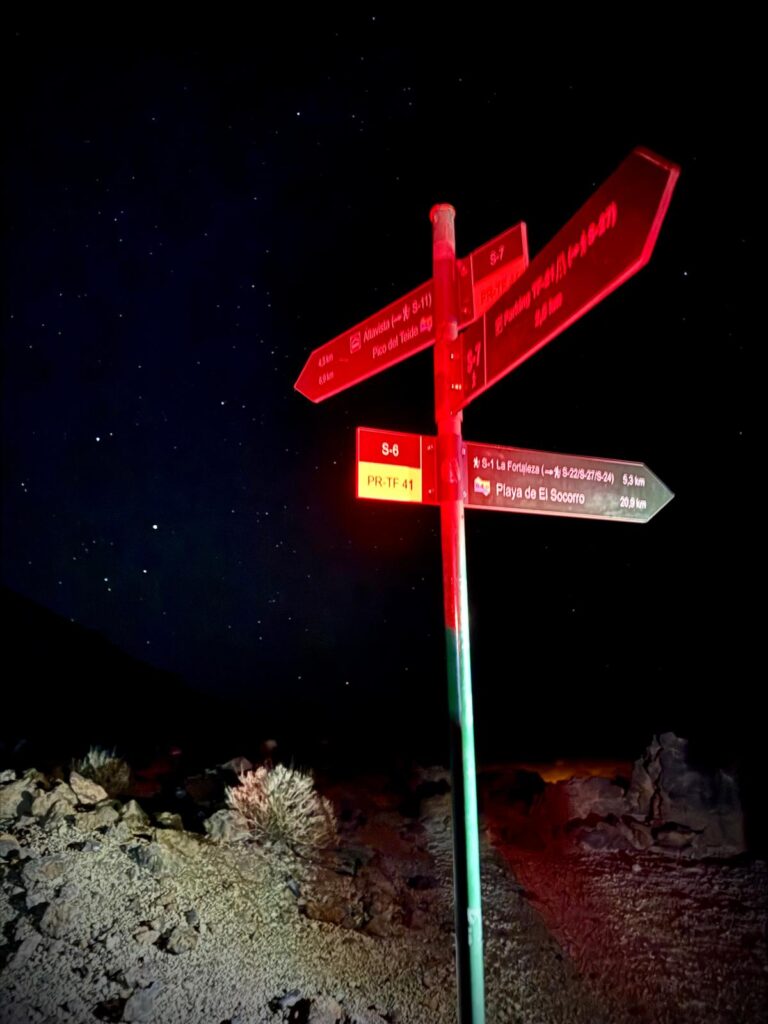
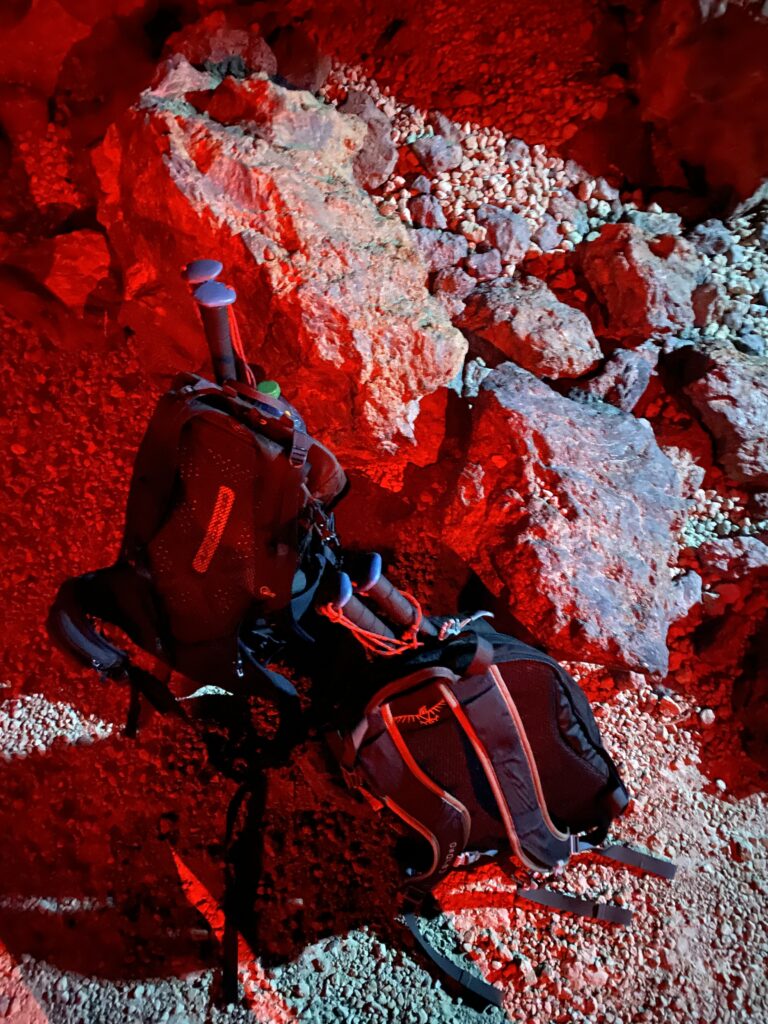
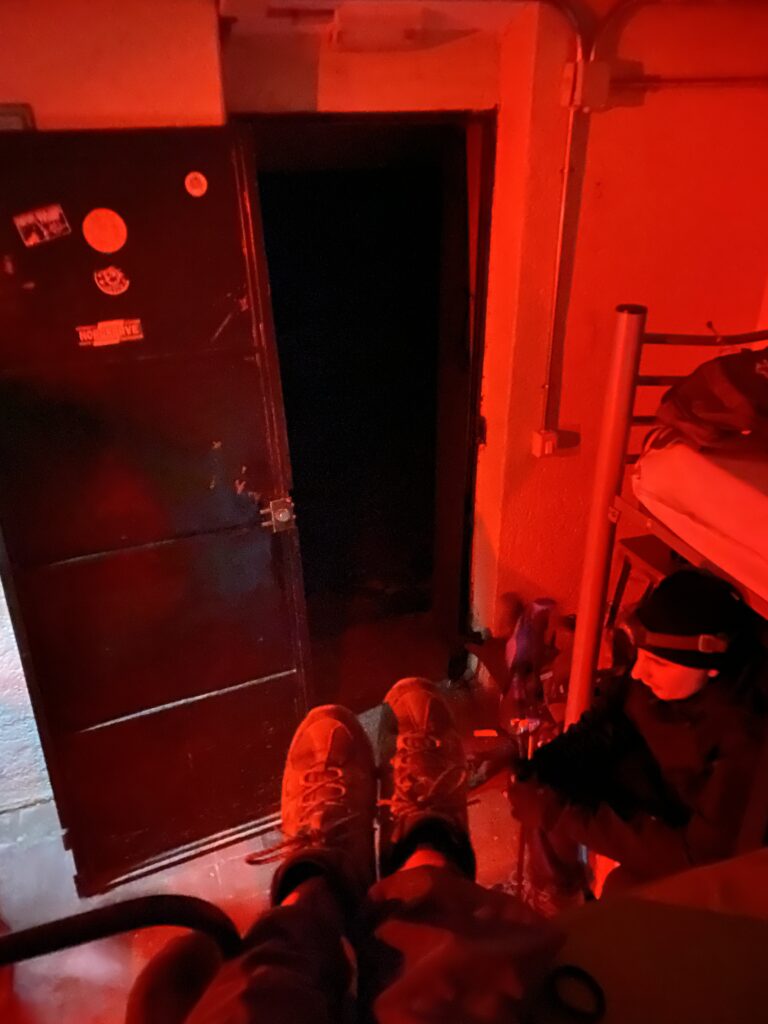
After an extended period of hiking (maybe 5 hours?) we made it to the alpine hut sitting at 3,260m – The Altavista Refuge. What once was a safe haven for hikers consisting of a kitchen, lounge, 54 beds, and an infirmary, now stood abandoned with its doors locked, and its warmth long vanished. Only a single outbuilding remained, containing 3 bunk beds that were clearly out of use, their metal frames rusted and unstable. Despite its disrepair, this was where we would rest.
For some context, at the peak of Teide temperatures range between 0°C and -10°C, with the biting wind making it feel even colder. If we wanted to reach the summit for sunrise, arriving too early would be futile as it would be impossible to endure the freezing conditions while waiting for the first light. To get our timings right and arrive the same time as the sunshine, we took (or attempted to take) a nap in this refuge.
To say this was an uncomfortable experience is putting it lightly. The wind howled outside with a cold draft sneaking through every nook and cranny, not to mention the broken door, completely off its hinges. My back was pressed against the stone wall, which absorbed any of the warmth left in my body, cocooned in layers they did little to warn off the biting frost. We must have been hovering just a degree away from hypothermia in this fractured mountain refuge. I could feel the bed frame shaking from our uncontrollable jitters. I wondered what could be going through my father’s mind at this point, I knew he was just as cold as I was, if not worse. My mind wondered to how these stone walls would have witness endless years of travellers; lost hikers, fearless climbers, perhaps even wild animals seeking shelter like us. We were just part of the cycle. It was a comforting thought in this situation and at some point, I must have drifted off to sleep.
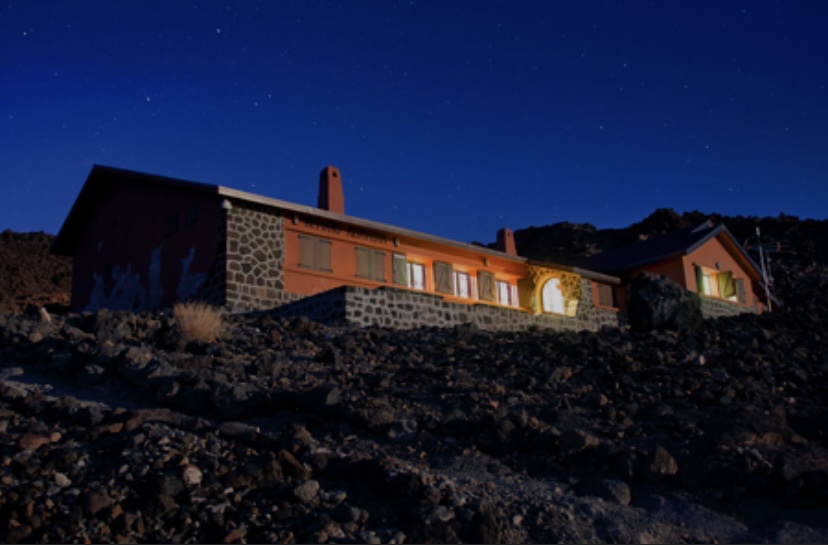
I didn’t manage to take any photos of the hut myself due to the darkness, and being pre-occupied with the trek – but here’s some I found online. The red building to the right of the picture is where we slept.
Beep. Beep. Beep. 4:50am – someone’s alarm cut through the night. That was our signal. Half a cereal bar, a gulp of water, a final adjustment of headgear and packs, and we were off for the last push. The sun would rise at 7am, leaving us roughly two hours for this final stretch. But for the first time, the hiking didn’t come easily. My feet felt impossibly heavy and with each step I lagged further behind the group, followed only by my dad who at this point I believe was making it through only via pure determination. I had to focus on my breathing again, we were getting increasingly higher, and the terrain was getting more challenging. Rocks were loose underfoot, and I were thankful for my poles. We just had to keep plodding along.
Fast forward to the final 200 meters, almost a vertical ascent. Although the sun wasn’t yet above the horizon, the sky was transforming, awash with baby blues, purples and pinks. For the first time, we could truly see what we had been walking on all this time. The reveal was breathtaking, it felt as though we were traversing the surface of the moon. The terrain was rugged, a precarious path skirting the edge of the crater of this immense volcano. Far below, the famous cloud inversion blanketed the earth, a stark reminder of just how high we had climbed. Fuelled with adrenaline and a new lease of life I scrambled upward as quick as my legs would allow. The end was in sight, and I was unbelievably excited. I lost sight of my dad, but I knew he was there, following behind me. Every few minutes, I paused to check for him, relieved to see him coming, though I couldn’t say he shared my renewed enthusiasm from the first touch of sunlight.
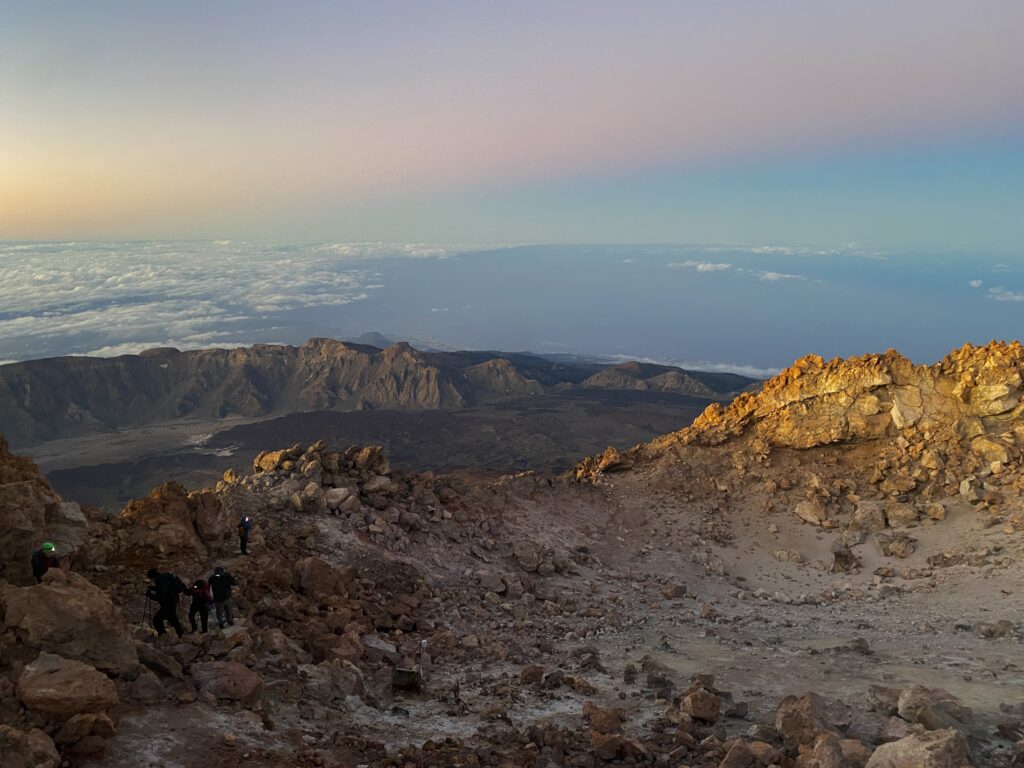
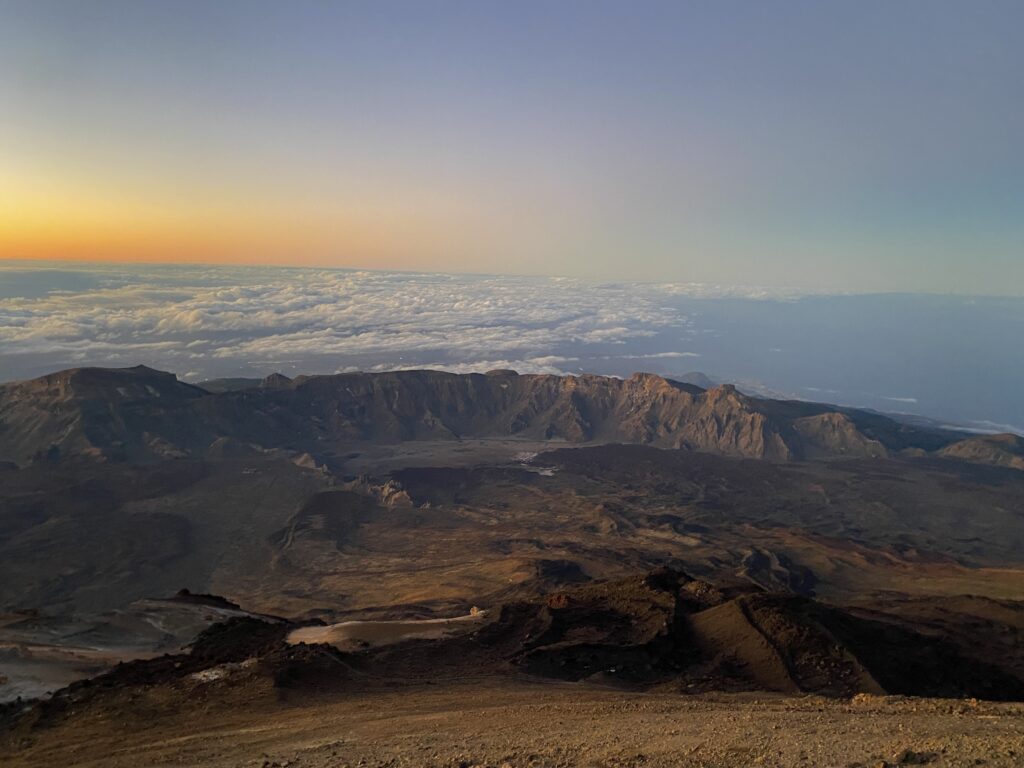
I almost forgot about the agony my legs had endured over the last few hours; at the summit I had a real spring in my step. I had made it. And it was beautiful. Less than a minute later the sun began to peak above the horizon. Simultaneously my dad emerged from over the scramble, wrecked with exhaustion. I was simply glad that he had made it, and he was too, even if it didn’t register immediately. Later, he told me at this moment he just wanted to descend as soon as possible.
Once again, the cold was unforgiving. The water left in our bottles had frozen solid, and the wind stung against my face. However, none of this mattered to me, the star of the show was the 360-degree views, and the sun. Low in the sky it cast an immense shadow of Mount Teide onto the blank canvas of sky behind us. It is moments like this that make you question your relevance in a world so vast and breathtaking.
Scientifically, I still don’t fully understand how this shadow phenomenon works, but after doing some research I found that it materialises due to the volcano’s steep elevation and the island’s proximity to the ocean. Even though Teide’s summit is not perfectly steep, its shadow appears as a perfectly triangular shape due to the way light interacts with the landscape; perspective distortion means the shadow tapers off as it extends toward the horizon. This phenomenon happens with other large mountains and volcanoes too, and is a stunning example of how light and perspective can create illusions in nature. Teide’s shadow is the largest projected over the sea in the world.

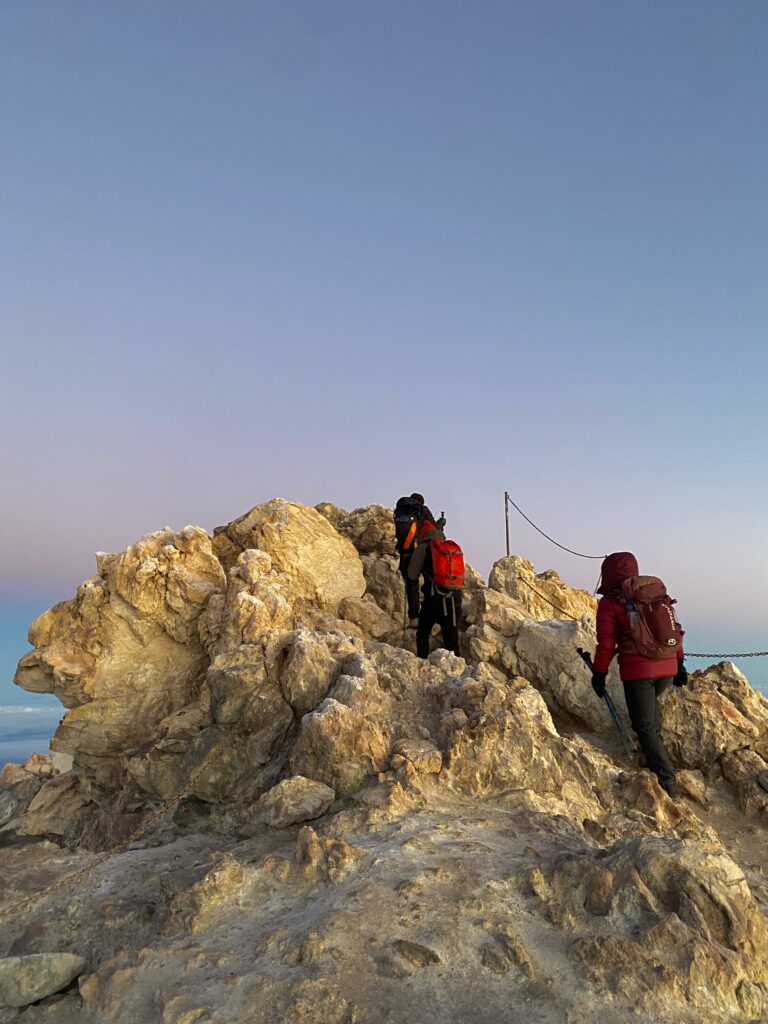
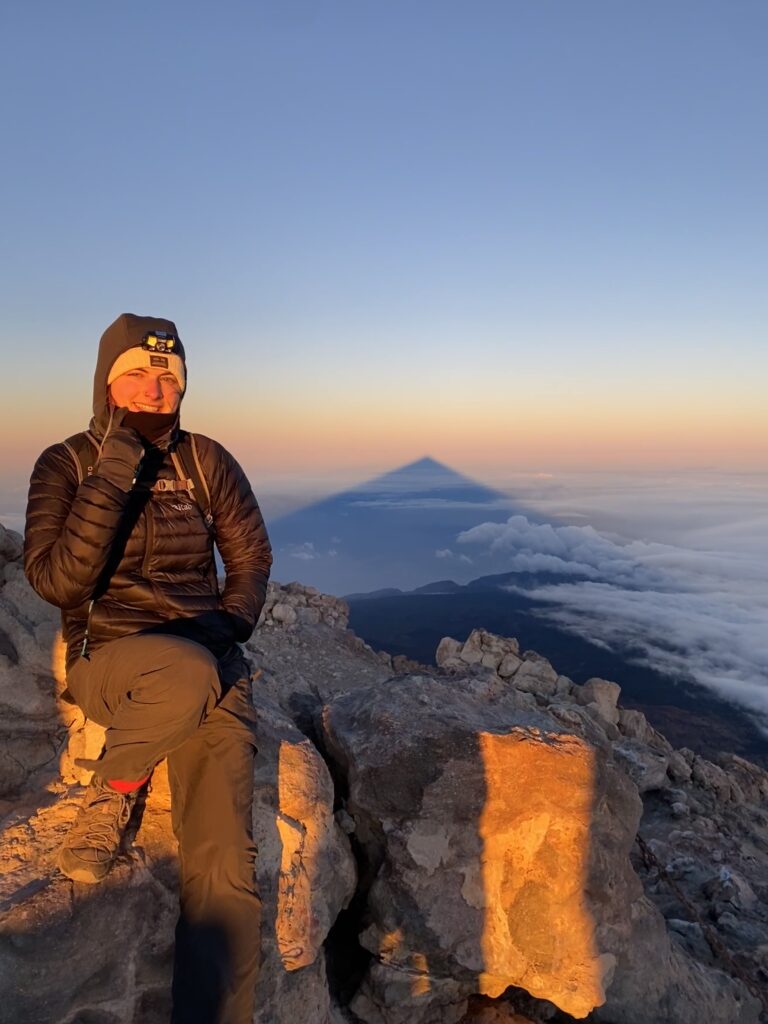
Looking back on this experience, both my dad and I are glad we did it. For me, it was pure adventure – something exhilarating, challenging, and deeply rewarding. I’d do it all over again without hesitation. For him, it was type 2 fun – the kind that demands endurance and might not feel enjoyable in the moment, but later, looking back, reveals its worth. I’ve embarked on many adventures, each one memorable in its own way; some have been solo treks, others shared with friends or fellow travelers. But this one stands out, not just because of where we were or what we saw, but because of who I got to share it with. Instead of just sending photos home, trying to put the experience into words, I got to share it firsthand, with my dad. That’s something I usually long for in every trek that I do. I get my sense of adventure from him after all.
Peace and love, Evie.
